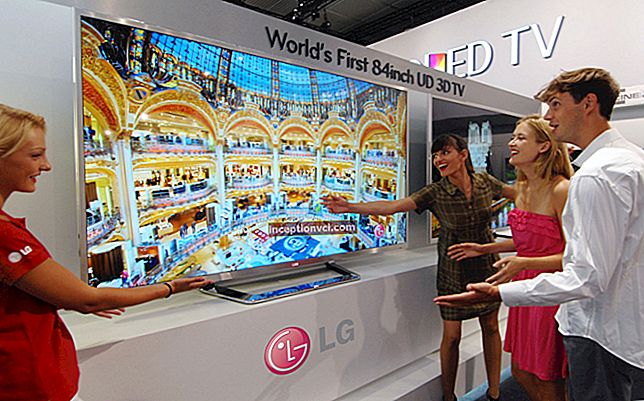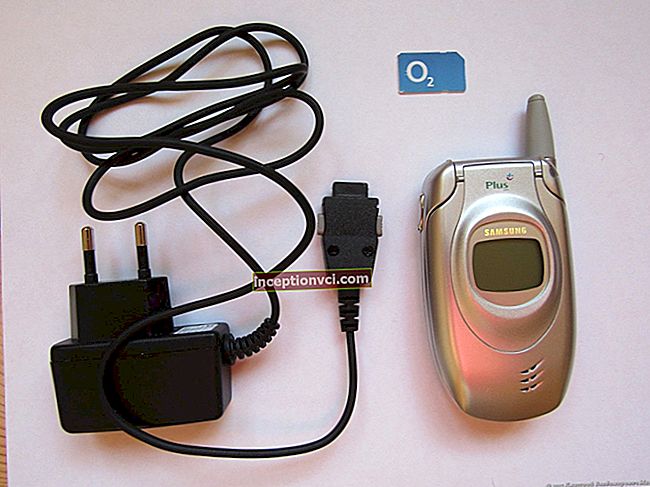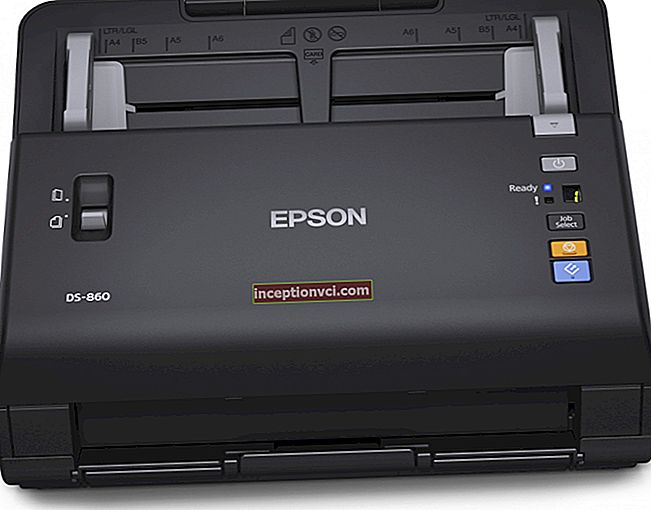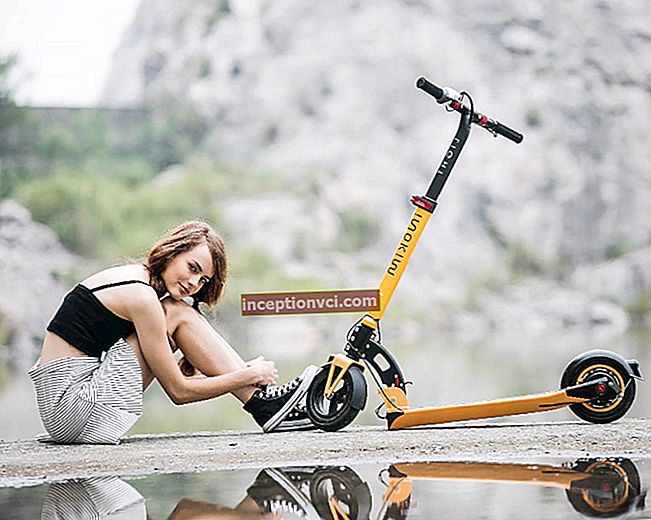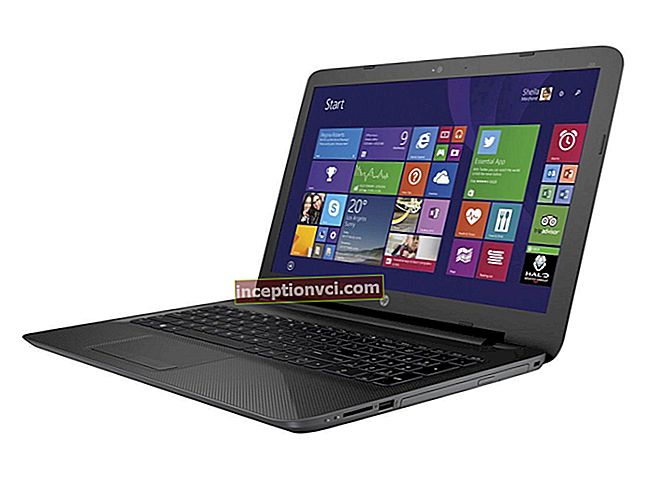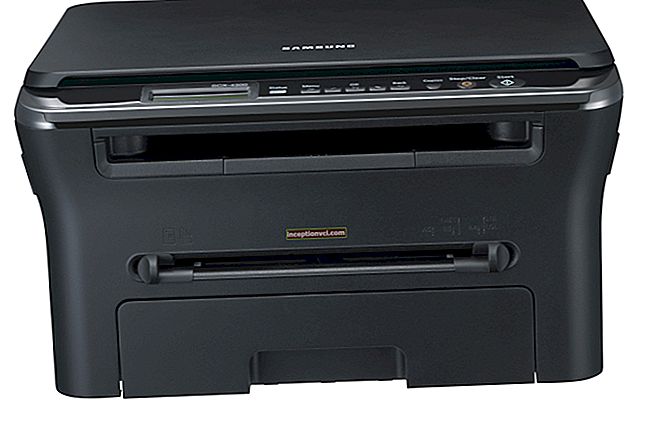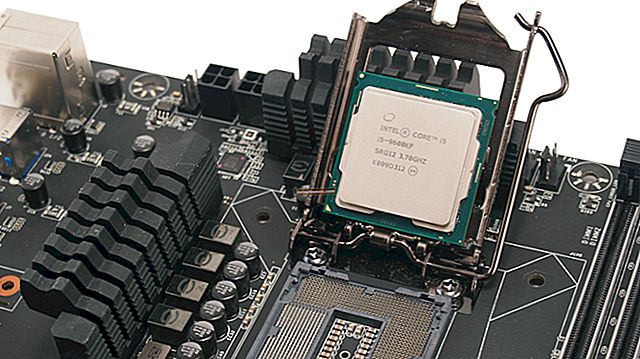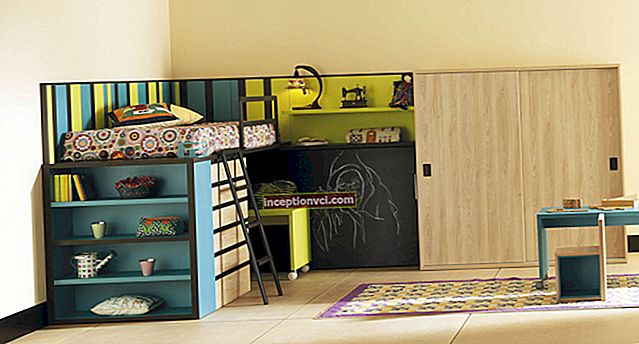The Canon Speedlite 580EX II is one of the most important accessories for photographers, and belongs to the upper segment of professional-grade external flash units. There are very few functions and features that it lacks.
The Canon Speedlite 580EX has been redesigned and replaced.
First of all, you need to find out whether the owners of the first version should think about a replacement. Since image quality is ultimately paramount, what is most interesting is how the flash will look. So let's get down to business. Since the flash head, working area, dimensions are almost identical for these models, the light flux will be the same for them. The big question is, how does E-TTL II exposure work?
Using the original 580EX and the new 580EX II, we tested a variety of scenarios, cameras, lenses and setup combinations (including Canon 1D Mark III DSLR, Canon EF 24-105mm F / 4L IS USM and Canon EF 50mm f / 1.2L USM) ... With the camera in M mode, the 580EX II does not notice any change in exposure, resulting in the same results in most cases.
The biggest deviation occurred in the frame, which was mostly filled with a black object, which accentuated a small white object. In this case, the 580EX fully illuminated the image, while the 580EX II produced a luminous flux more than 1.5 times lower. Possibly too low, but the basic details have been retained.
Most (but not all) of the other changes to the Canon Speedlite 580EX II are good.
The 580EX II fires approximately 20% faster than the 580EX. Also noticeable is the lack of sound during recharging. Many are accustomed to listening to the sound of charging and can clearly tell when it came out at full capacity, and know when the battery is nearing the end of its charge. With the new version, you will have to relearn. The noise is still there, but the pitch is higher.

The Canon Speedlite 580EX II has a better build quality and a metal foot, which is one of the more noticeable changes. But the good (or bad, at your discretion) news is that the metal leg is attached to the plastic housing inside the flash. It's bad that there will still be bottlenecks prone to breakage, but it's good that your camera will most likely remain intact (a broken flash is better than a broken camera anyway). Metal will certainly withstand repetitive assembly / disassembly better. The plastic seat is shown at the top left - the new 580EX II metal foot is shown at the top right.
Visible dust and moisture resistance is another innovation of this flash. This feature is highly sought after by sports photographers and photojournalists. To achieve complete protection, it is necessary to have a hot shoe with a design similar to that of the Canon EOS 1D Mark III. Users of older models will not be able to achieve this level of protection. The rubber seal of the communication ports and the external power connector complements the all-round defense against the external environment.

The long-established fixing screw (top left) has been replaced with a convenient locking lever (top right). Simply slide the lever from left to right with your finger until it clicks into place. Thanks to this design, it is now much easier and faster to lock or unlock the flash in the shoe.
But not everything is faster to use, the new location of the off / master / slave menu for remote flash adjustment (note that the switch is missing - more on this function below). To access this setup menu item, you need to press the zoom button within 2 seconds. In the old model, this operation took much less time. Canon's new DSLR cameras are capable of controlling external flash units, which may make them easier to use.
In addition, there are many small changes in size, shape, body texture in the Canon Speedlite 580EX II.As you can see from the comparison of photos throughout this review, the new flash is slightly larger than the older model. The body redesign reminds us of the 580EX's predecessor, the Canon Speedlite 550EX. Small changes concern wireless slave sensors and converted autofocus. The flash has a hole for external automatic and manual metering sensors. The 580EX II weighs 525g with 4 NiMH batteries versus 490g for the 580EX. The Canon Speedlite 580EX II has a redesigned power switch that rotates instead of sliding. This innovation is more of a marketing innovation, because the physical change is not significant from the user's point of view.

External automatic and manual measurement revised. All you have to do is set the ISO and aperture of the camera to the 580EX and it will calculate the flash output. A built-in light meter turns off the flash at a certain level. To use Auto External ("E") mode, the camera must support it. Canon EOS 1D Mark III is the first to offer this feature. The camera transfers the ISO and aperture values to the flash automatically. Users of other cameras can apply external measurements, but the external manual ("EM") mode must be used, which requires manual camera adjustment. Manual measurement mode is also available. Custom Menu Function Settings are used to select the external measurement mode. There is no high-speed sync and the preflash does not fire in external metering modes. When measured externally, even in the 1D Mark III, the shots come out significantly underexposed (usually on the order of 1.5 or so) if the subjects were very dark.
Of course, the normal E-TTL-II (or ETTL), TTL and M modes are still present. E-TTL II and the previous E-TTL are electronic through-lens metering modes to determine the required power of the subsequent main flash from the preflash flow. This Canon automatic flash is very easy to use. E-TTL compatible with all EOS digital SLR cameras; PowerShot G2, G3, G5, G6, G7 and Pro1 and the following EOS film cameras - EOS-1V, EOS-3, Elan 7N series, Elan 7 series, Elan II series, Rebel T2, Ti, K2, GII, G Non-electronic TTL operation is compatible with all other 35mm EOS film SLR cameras. This flash also transmits color information to the camera. E-TTL / E-TTL output depends on the camera mode used. With the camera in M mode, the flash will provide the amount of light needed to get the correct exposure. This is the easiest mode to use the flash as your main light source, even for capturing quick action in the dark. In Av mode, the camera will set its exposure to the ambient light level and the flash will fill it. But problems can arise in this mode - if Custom Functions are selected to increase the shutter speed. Tv mode is similar to Av.
Another flash mode: manual. If the distance to the subject is not very large (portraits, for example), then the exposure can be selected from shot to shot. Mode variations are made using the control dial, easily and quickly set the output power in 1/3-stop increments - 1 1, 1/2, 1/4, 1/8, 1/16, 1/32, 1/64 and 1 / 128.
Another interesting mode available on the Canon Speedlite 580EX II is stroboscopic flash. When selected, the 580EX II fires a fast burst of flashes.
In addition to being the first camera to support external auto mode, the EOS 1D Mark III is also the first to have the ability to control the 580EX II by applying custom function settings from its own menu. This is a pretty nice feature.

Let's take a closer look at the physical changes. Whenever the batteries in the 580EX (top left) have to be replaced, there is a concern that the battery cover might break if you try to open it. Cover 580EX II is designed differently (top right). It is enough to slide the round button to the side and then down - the battery compartment appears in free access in the form of a 2x2 square (not staggered) AA batteries.
Speaking of nutrition.The Canon Speedlite 580EX II is estimated to be capable of roughly 100 to 700 pulses on new alkaline batteries, which will provide a charging time of 0.1 to 6 seconds. For fast flash (shooting with an incompletely charged flash), the recycling time is 0.1 to 2.5 seconds. From the manual “Using AA batteries other than alkaline type may result in improper contact due to improper battery contacts. AA Ni-MH or lithium batteries can also be used.
Do not use alkaline batteries, this will save you a lot of money and the flash will perform better. NiMH batteries have much lower internal resistance, resulting in significantly shorter recharge cycles (up to 50% faster). NiMH batteries also have a much higher capacity.
Auto power off on the Speedlite 580EX II usually occurs after 90 seconds of inactivity if the flash is not configured as a slave. In addition, there is a temperature sensor inside that prevents operation if the internal temperature exceeds a certain level. When the thermal cutoff is triggered, the flash will not fire until it cools down. This usually takes about 15 minutes. Function C. Fn 14 disables Auto Power Off, but does not disable thermal protection, which is logical.
A total of 14 Custom Functions (C.Fn-00 - C.Fn-13) can be set in the flash:
C.Fn-00: display distance indicator (feet / m)
C.Fn-01: Auto Power Off (Enable / Disable)
C.Fn-02: flash simulation
C.Fn-03: Exposure Bracketing Automatically Undo
C.Fn-04: Exposure Bracketing Sequence
C.Fn-05: flash metering mode
C.Fn-06: fast burst flash
C.Fn-07: Pre-flash with autoflash (on / off)
C.Fn-08: AF-assist beam firing C.Fn-08: Autofocus shooting
C.Fn-09: auto zoom to sensor size (on / off)
C.Fn-10: Slave Auto Power Off Timer
C.Fn-11: Slave cancel auto power off
C.Fn-12: F flash charging from external power supply
C.Fn-13: Flash exposure meter settings
As you would expect from Canon's phagemaster flash, the 580EX II has a wide range of control including exposure compensation, high sync speed, first / second curtain sync. High sync speed can be used if necessary if the camera's shutter speed is faster than the maximum sync speed (usually 1/200 or 1/250), for example when shooting outdoors with sufficient light. At certain shutter speeds, the second curtain begins to close before the first is fully open - standard flash mode requires a wide open aperture. In high speed mode, the faster the shutter speed, the more effective a short flash becomes.
When using second-curtain sync when shooting moving subjects, motion will be received at the end of the exposure when the flash is fired. The exposure compensation system overrides the camera settings, while other parameters are determined by the values of the last adjustment.
Like the 580EX, the 580EX II allows the head to be raised. Lifting can be done manually (for creativity) or automatically using the camera. The feature is included in FOVCF (1.0x, 1.3x or 1.6x) digital cameras, the lift is optimized for the camera and lens, less light is used, and the batteries perform more optimally. This means that the EF-S 10-22mm USM lens is supported by EF-S compatible cameras. A lens wider than 24mm requires a diffuser. Lenses wider than 14mm require no flash operation or a dedicated diffuser.
With a single button, the Canon Speedlite 580EX II can be rotated 180 degrees to either side, 90 degrees up and 7 degrees down. When using the built-in flash, consider also using the retractable lightbar trap. This white, semi-rigid plastic panel is designed to create a bright reflection in the eyes of your subject. It makes sense to use reflectors only at a certain distance, until their effectiveness begins to noticeably decrease.
You can enable autofocus to improve autofocus performance in low light conditions.Canon Speedlite II autofocus is aligned with the focus point on all Canon EOS bodies - 1, 3, 5, 7, 9, or 45 points.
The Canon Speedlite 580EX II can be controlled (Master mode) and controlled (Slave mode) with a compatible Speedlite as well as the Canon ST-E2 Wireless Transmitter to create a very compact and flexible lighting system. The 580EX II has the ability to control up to 3 groups (A / B / C - C for background light only) and can turn its flashes on / off in Mix Master mode.
Exposure compensation, high sync speed, lock, bracketing, manual flash settings, strobe mode on the master flash are automatically set to the slave. This is a line-of-sight system, although indoor may involve indirect communication if the signal reflects off objects in the room sufficiently to communicate with a remote flash. Wireless transmission range (periphery-center) 12m-15m indoors and 8m-10m outdoors. Wireless communication coverage +/- 40 degrees horizontally and +/- 30 degrees vertically. Four channels are available for working with Slave devices to avoid conflicts with other photographers.
External flashes such as the Canon Speedlite 580EX II are some of the most popular accessories for DSLR owners. Why? Why use an external flash? The answer may be obvious to owners of cameras without a built-in flash, but not so clear to those who use cameras with a built-in flash. Built-in flashes are great for filling in shaded areas (such as people's eyes) in a photo. To use fill-flash, you must set the exposure for the ambient light, then select exposure compensation between -1 and -2 EV. The built-in flash is also useful for adding sparkle to people's eyes.
The next most obvious answer is to raise the flash high enough above the camera so that the lens and hood will not block the light.
When the light source is very small and very close to the image axis, using the built-in flash as the main light source often results in harshly illuminated images (often with red people's eyes). Elements close to the flash are often overexposed, the background often turns black, there are usually harsh shadows, and objects tend to become flat. You can use such light only as a last resort, it is much preferable to use a higher ISO value, aperture, slow down the shutter speed, use image stabilization, a tripod. But sometimes there is simply no choice - it's just too dark, objects in motion. In this case, you just have to use the flash for the main light source. But, this does not mean that the flash should shine directly to the subject.
In light of the above, one of the useful functions can be called tilt and rotation of the head, which allow us to redirect light to large white (or other similar neutral color) reflective surfaces, for example, a ceiling, walls, a piece of white cloth, standard reflectors. Thus, the main light comes from a wide reflective surface and becomes much softer, making objects less flat.
In addition, a huge range of modifiers can be used with flash to create a wide illumination surface for direct flash, bounce flash, or a combination of both.
Using a flash in a hot shoe is a big step towards enhancing photographs.
Canon's Wireless Speedlite Flash Controller offers many more benefits. The flash can be installed in a softbox or umbrella for superior lighting. Multiple wireless remote controls can be configured into a single system to create a highly portable, professional lighting setup.
An additional significant reason for using an external flash instead of a built-in flash is the amount of light that an external flash can provide. For example, the 350D's built-in flash has a guide number of 42 "(13 m). It is even impossible to compare with 190" (58 m) for the Canon Speedlite 580EX II Flash (the same for the 580EX).Larger lenses have a shorter effective distance, for example the Canon EF 50mm f / 1.4 USM has a range of around 30m with the 580EX II.
After we have decided why we need to use the flash, the question "Which one?" Canon has variants of Canon Speedlite 430EX Flash or Canon Speedlite 580EX II (or possibly 580EX). Canon makes the Speedlite 220EX, but it's pretty featureless - good mostly for fill-flash.
Comparison with 430EX II
One of the main differences between the 580EX II is the amount of light each can provide. The 430EX II has a 141 "(43 m) guide number and the 580EX II has a 190" (58 m) guide number. The difference is not that big, but to a large extent the 580EX II's advantage can become important when using the flash with modifiers such as an umbrella, softbox or diffuser - bounced light from a high ceiling. In addition, the 580EX II can change the flux from 1/1 (full power) to 1/128 power in 1/3 steps, while the 430EX II can change the light from 1/1 to 1/64 in 1 steps.
The next major difference is that the 580EX II can be used as a master and the 430EX II can only act as a slave flash unit. Any number of 430EX II, 430EX, 420EX, 580EX II, 580EX and 550EX Speedlites can be combined as slaves, but only Canon 580EX II, 580EX and 550EX Speedlites can act as masters. In addition, Canon Macro Ring Lite MR-14EX, Macro Twin Lite MT-24EX or Speedlite ST-E2 transmitter can be used as masters. Many people start with the Canon Speedlite 430EX II (or started with the 420EX) and then move up to the 580EX or 580EX II. The 430EX II can be used as a remote control.
Those using Canon 45-point (1-series) cameras should note that the Canon Speedlite 430EX II only covers up to 9 focus points, it is worth noting that all focus points are not covered as in the 580EX II.
The fact that the 580EX II can be powered from an external power source will be important for photographers with heavy flash use. The 430EX does not have this capability.
Although the Canon Speedlite 430EX II head moves up / down from 0 to 90 °, left from 0 to 180 ° and to the right from 0 to 90 °, the 580EX II allows an additional -7 ° downward and full 0-180 ° rotation to the right. The 580EX II additionally includes a white plastic retractable reflector. The Canon Speedlite 430EX has 6 custom flash settings, the 580EX II has a whopping 14.
If any of the 580EX II's benefits are important to you, consider purchasing the 580EX II. Otherwise, the 430EX is very much an option. It is 15% lighter and more than 25% smaller in total. Perhaps most importantly, the Canon Speedlite 430EX II costs a lot less.
Canon Speedlite 580EX II's official dimensions are 76mm x 134mm x 114mm. Official weight 375 g without batteries (4 AA alkaline batteries add 100 g.
